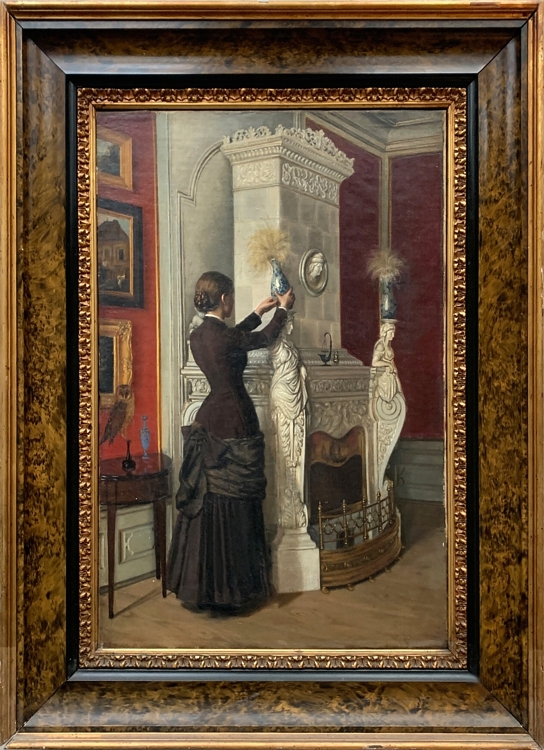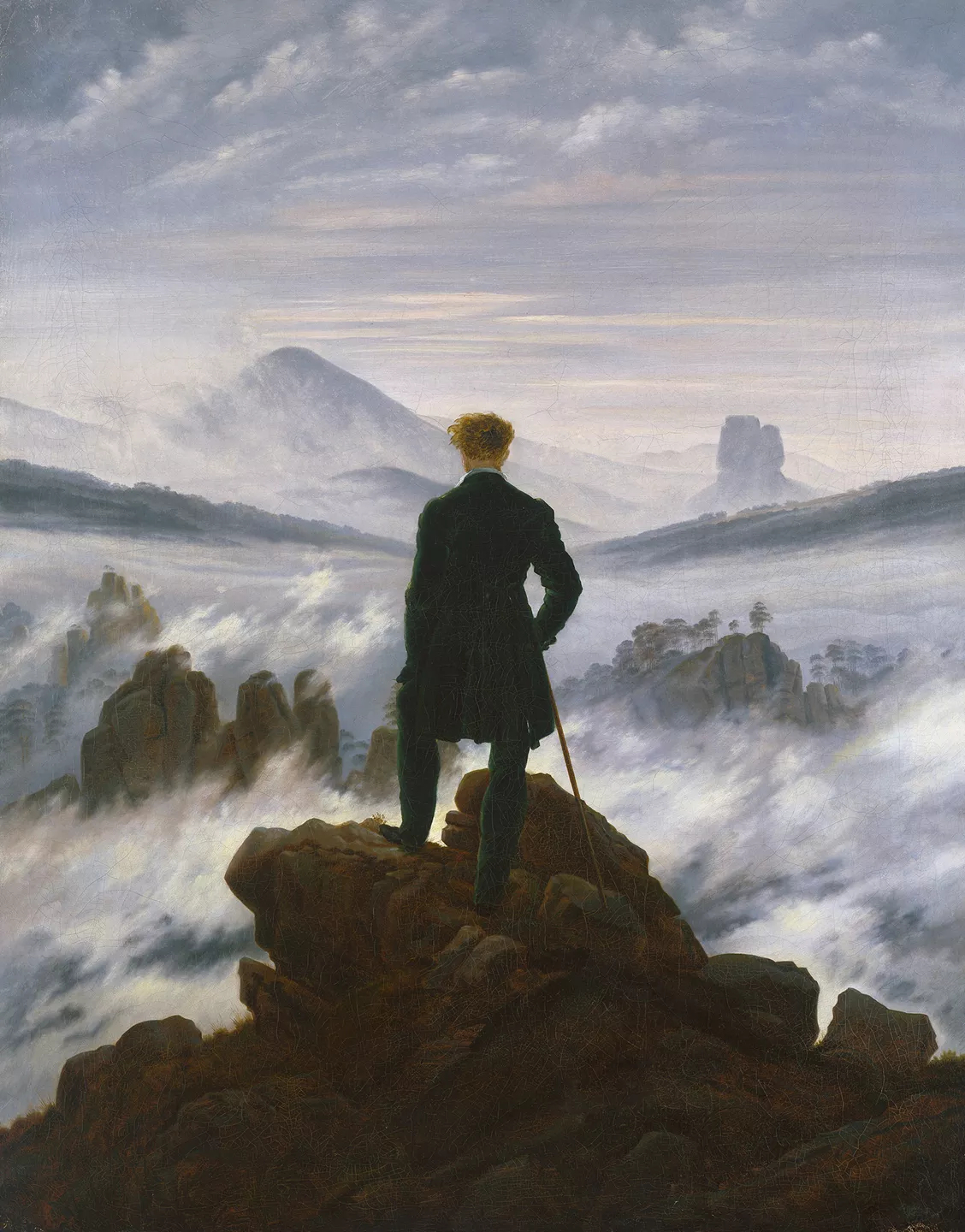
Interior from Bygholm Castle with a Back-Turned Woman by the Fireplace
Oscar Schütte Bygholm (1837-1913)
19th Century
Offers
Shipping $99 Standard Parcel View Options
Questions about this piece
Item Details:
INTERIOR FROM BYGHOLM CASTLE WITH A BACK-TURNED WOMAN BY THE FIREPLACE
OSCAR SCHÜTTE BYGHOLM
19th CENTURY
Oil Painting on Canvas
Size: 18.9 x 28.0 in; 48.01 x 71.12 cm
Exceptionally well-painted interior with favorite Scandanavian theme of back-turned woman Danish artist Oscar Schütte Bygholm. The often-repeated Scandanavian theme of an Interior with Young Woman Seen from the Back is an artistic opportunity to pay detailed attention to the play of light, along with evoking a feeling of mystery and secrecy produced by presenting subjects with their back to the viewer.
Here the artist includes the posture Rückenfiguren—figures with their backs turned to the viewer so that their expression is concealed. This conceit serves to concentrate the viewer's attention on the pretty nape of the young woman’s neck, highlighted between the demure dark dress and the simple tight braid of her hair. It has also been noted that the portrait is a good example of light and shade. The dark hair contrasts with the fair skin on her neck with light coming in from the left, while her dark clothing stands out against the pale background, while the play of light and shadow on the folds of her dress adds depth of the painting.
The most famous back figure in art history: Caspar David Friedrich's The Wanderer above the Sea of Fog, 1818 with its enigmatic figure standing on a craggy rock surveying the misty landscape in front of him, is an icon of the Romantic art movement.
In his Observations upon Viewing a Collection of Paintings, from around 1830, he wrote that it is “a great merit, perhaps the greatest thing an artist is capable of, when he touches the spirit and arouses thoughts, feelings and emotions in the beholder, even if they are not his own.” The use of Rückenfiguren can be seen as a means to encourage this. “We are invited to reflect on what it means to see.”
The back figure is a subject of painting and graphics, photography and film. It serves to represent the depth space on a two-dimensional image surface, through which the viewer can identify with the figure looking into the picture and thus empathize with the spatiality that is to be conveyed. The back figure has its origins in the art of antiquity and has since been subject to changes in the understanding of images in every art era.

Creator: Oscar Schütte Bygholm
Creation Year: 19th Century
Dimensions: 18.9 x 28.0 in
Medium: Oil Painting on Canvas
Movement/Style: Realism
Period: 1800-1899
Condition: Fine
